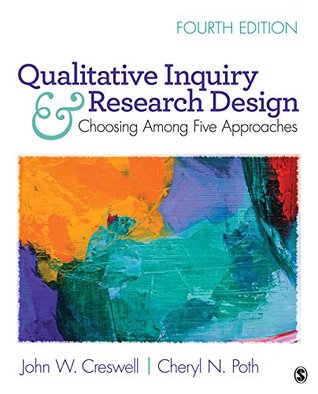More on this book
Kindle Notes & Highlights
Yin, R. K. (2014). Case study research: Design and method (5th ed.). Thousand Oaks, CA: Sage. Robert Yin adds breadth and depth to this new edition with end-of-chapter tutorials. His emphasis on systems and procedures for generating reliable findings and valid interpretations is particularly noted in designs (see Chapter 2), data collection (see Chapter 4), and analysis (see Chapter 5).
For example, when writers compile a phenomenology, they report how individuals participating in the study view their experiences differently (Moustakas, 1994).
In short, the qualitative researcher tries to minimize the “distance” or “objective separateness” (Guba & Lincoln, 1988, p. 94) between himself or herself and those being researched.
The logic that the qualitative researcher follows is inductive, from the ground up, rather than handed down entirely from a theory or from the perspectives of the inquirer.
Social science theories may be theories of leadership, attribution, political influence and control, and hundreds of other possibilities that are taught in the social science disciplines.
Qualitative research begins with assumptions and the use of interpretive/theoretical frameworks that inform the study of research problems addressing the meaning individuals or groups ascribe to a social or human problem.
The entire culture-sharing group in ethnography may be considered a case, but the intent in ethnography is to determine how the culture works rather than to either develop an in-depth understanding of a single case or explore an issue or problem using the case as a specific illustration.
Thomas (2015) argues, “Your case study is defined not so much by the methods that you are using to do the study, but the edges you put around the case” (p. 21).
We choose to view case study research as a methodology: a type of design in qualitative research that may be an object of study as well as a product of the inquiry.
multiple sources of information (e.g., observations, interviews, audiovisual
Examples of parameters for bounding a case study are such the specific place where the case is located and timeframe in which the case is studied. On occasion, certain people involved in the case may also be defined as a parameter.
This is called an instrumental case (Stake, 1995).
Case studies often end with conclusions formed by the researcher about the overall meaning delivering from the case(s). These are called assertions by Stake (1995) or building “patterns” or “explanations” by Yin (2009).
single instrumental case study,
Encyclopedia of Case Study Research
Like ethnography, case study data collection involves a wide array of procedures as the researcher builds an in-depth picture of the case.
A final issue is whether the researcher shares personal experiences with participants in an interview setting such as in a case study, a phenomenology, or an ethnography. This sharing minimizes the “bracketing” that is essential to construct the meaning of participants in a phenomenology and reduces information shared by participants in case studies and ethnographies.
Detailed description means that authors describe what they see. This detail is provided in situ—that is, within the context of the setting of the person, place, or event. Description becomes a good place to start in a qualitative study (after reading and managing data), and it plays a central role in ethnographic and case studies.
Finally, the researcher develops naturalistic generalizations from analyzing the data, generalizations that people can learn from the case for themselves, apply learnings to a population of cases, or transfer them to another similar context.
In comparing description and analysis, Merriam (1988) suggests that the proper balance might be 60% to 40% or 70% to 30% in favor of description.


